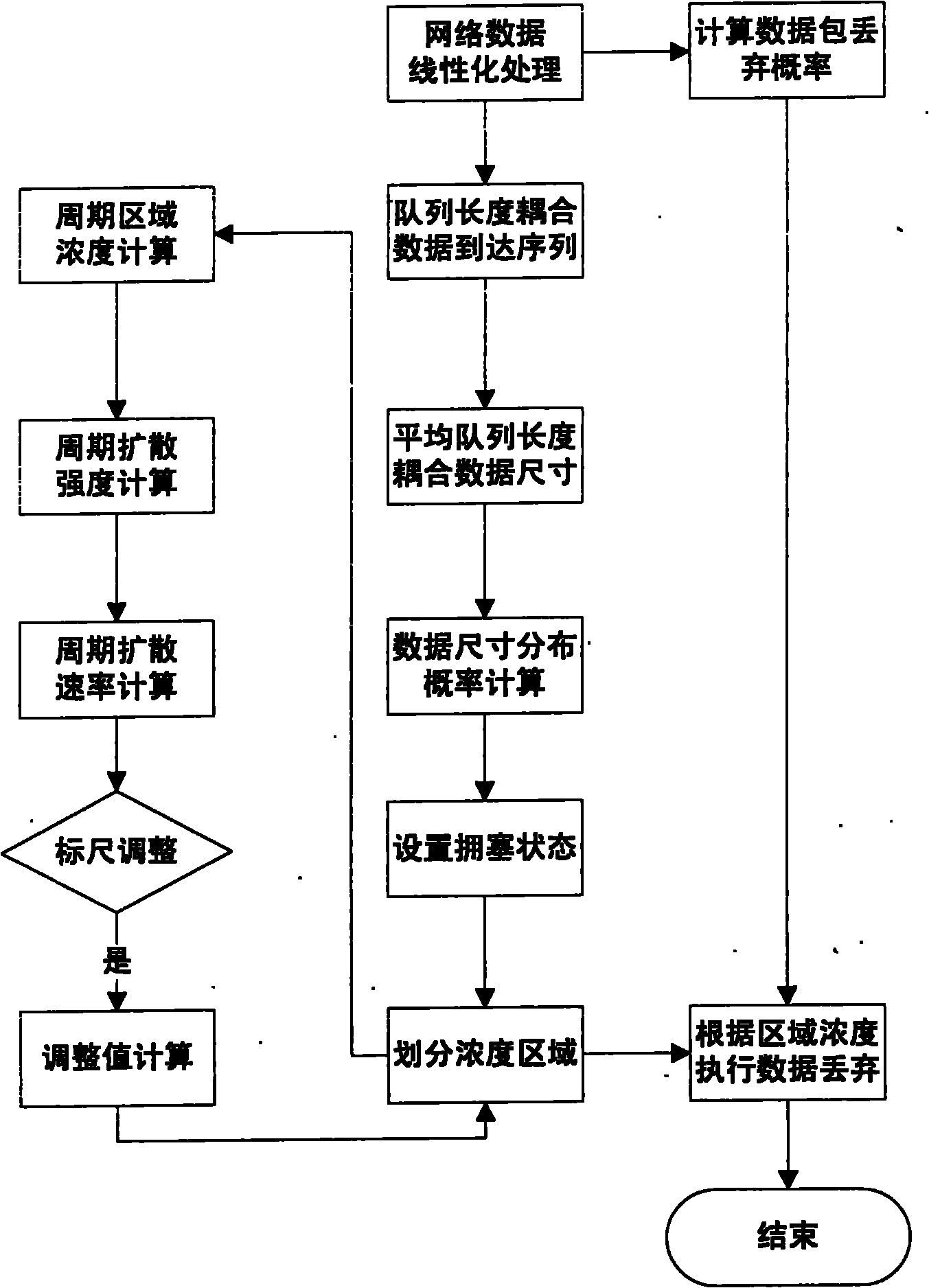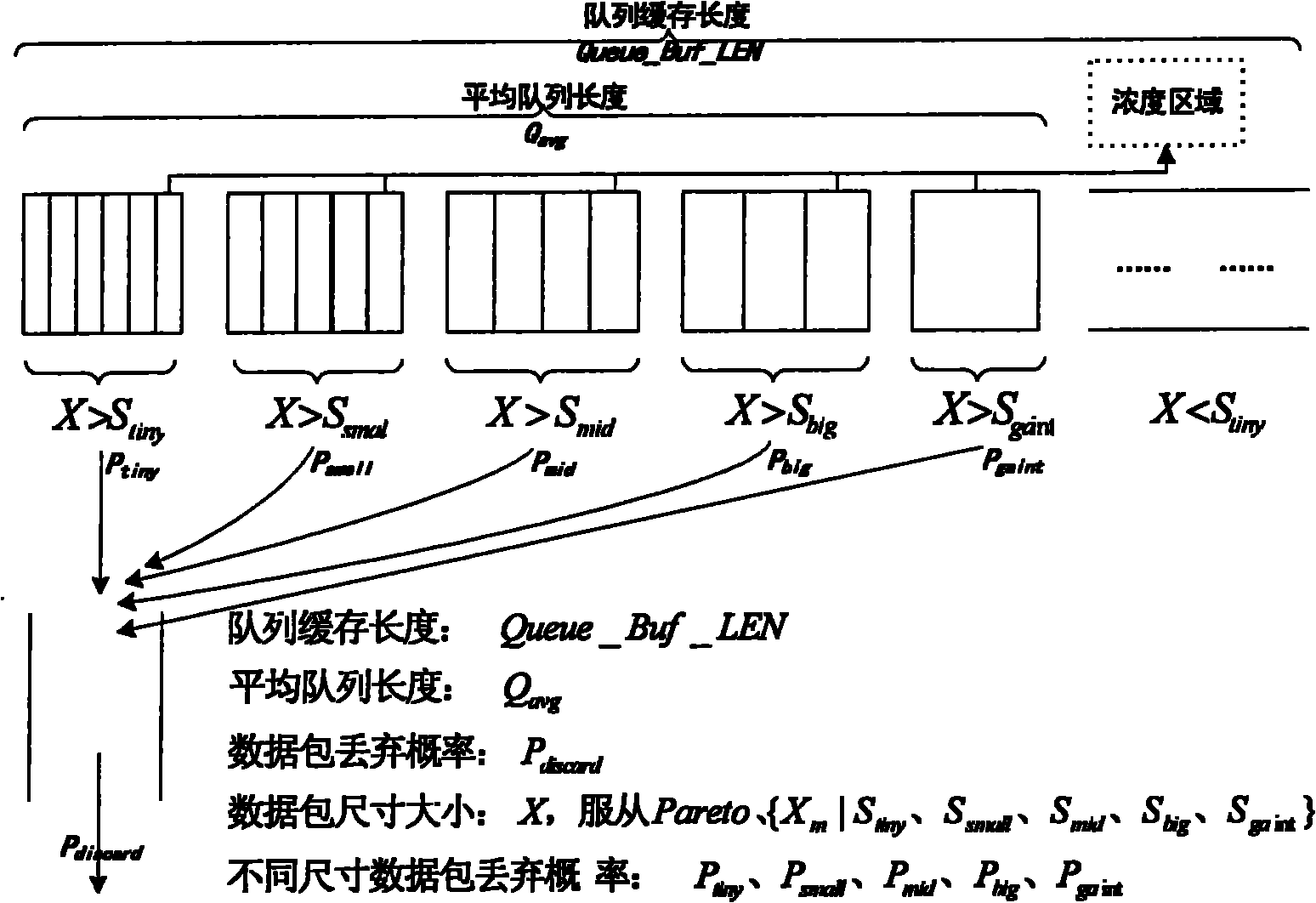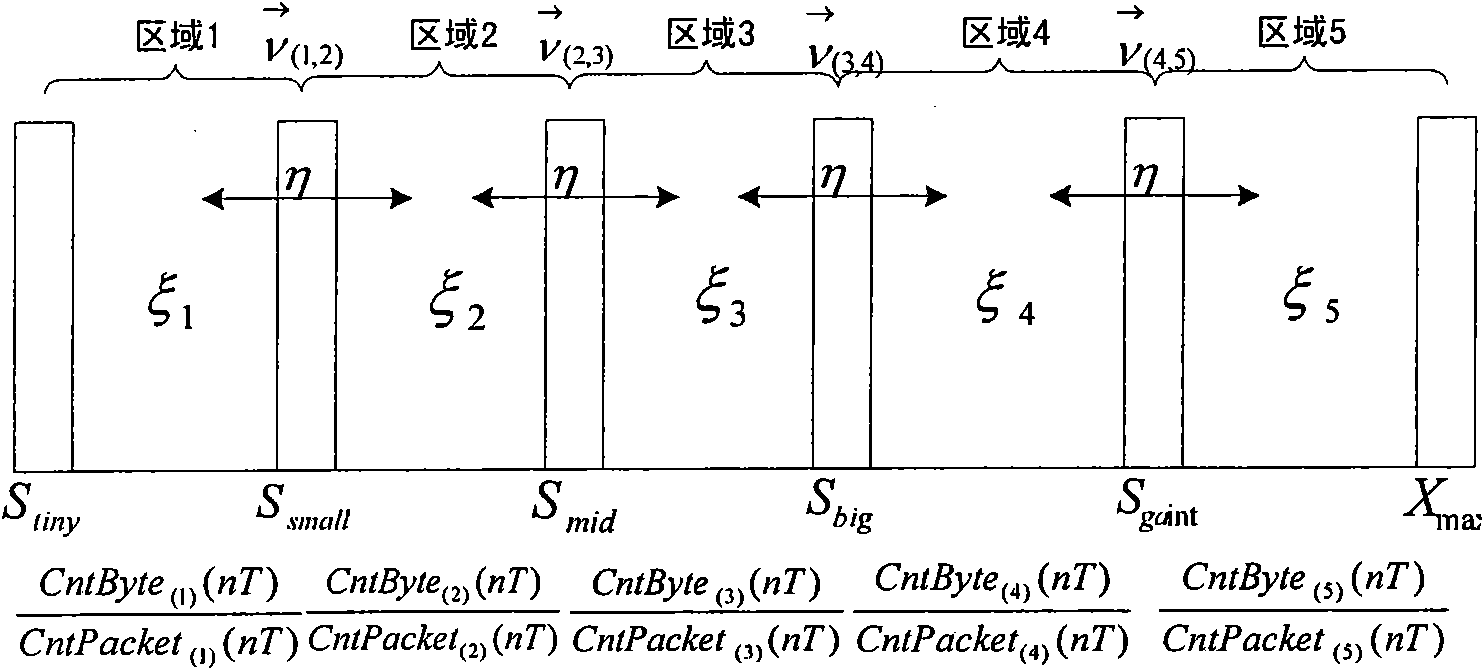RED-based network congestion control algorithm
A technology of network congestion and control algorithm, applied in the direction of data exchange network, digital transmission system, electrical components, etc., can solve the problems of reducing message transmission, network jitter, high burst traffic occupation, etc., to reduce configuration difficulty and improve control effective effect
- Summary
- Abstract
- Description
- Claims
- Application Information
AI Technical Summary
Problems solved by technology
Method used
Image
Examples
Embodiment 1
[0046] Explanation of terms:
[0047] S tiny , S small , S mid , S big , S giant Five numerical concentration measures representing the maximum size of packets in the network respectively.
[0048] P tiny , P small , P mid , P big , P giant Respectively represent the Pareto distribution probability of the data size in each interval.
[0049] P discard Indicates the packet discard probability in each interval of the data.
[0050] Queue_Buf_LEN indicates the length of the queue buffer.
[0051] Queue (utilizntion) Indicates the statistical average queue utilization.
[0052] ζ represents the concentration value of network traffic.
[0053] η represents the relative diffusion strength.
[0054] represents the diffusion rate.
[0055] CntByte (sum) Indicates the total capacity of data flowing through the queue in a period T.
[0056] CntPacket (sum) Indicates the total amount of data flowing through the queue in a cycle T.
[0057] CntByte (i) and CntPacke...
Embodiment 2
[0097] Repeat Example 1, with the following differences: By calculating the concentration, relative diffusion intensity and diffusion rate values of the network flow in the interval, the calculated concentration value is used to partially differentiate the diffusion rate in the sampling period to obtain the change of the scale between the sampling periods size, and use the calculated results to automatically adjust the ruler. This method can be used to calculate the dynamic drop probability of each interval in different periods, so as to adapt to the changes of network congestion status in different periods.
[0098] Algorithm adaptation network congestion state is the optimization subroutine to the 6th step of the present invention, makes algorithm can effectively deal with the arbitrariness and suddenness of network data transmission, self-adaptive design principle is as follows image 3 As shown, the specific implementation description is as follows:
[0099] (1) Using F...
PUM
 Login to View More
Login to View More Abstract
Description
Claims
Application Information
 Login to View More
Login to View More - R&D
- Intellectual Property
- Life Sciences
- Materials
- Tech Scout
- Unparalleled Data Quality
- Higher Quality Content
- 60% Fewer Hallucinations
Browse by: Latest US Patents, China's latest patents, Technical Efficacy Thesaurus, Application Domain, Technology Topic, Popular Technical Reports.
© 2025 PatSnap. All rights reserved.Legal|Privacy policy|Modern Slavery Act Transparency Statement|Sitemap|About US| Contact US: help@patsnap.com



